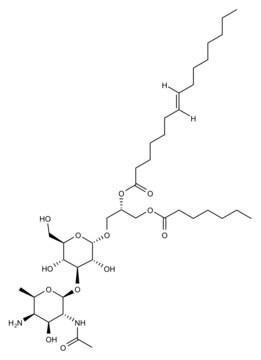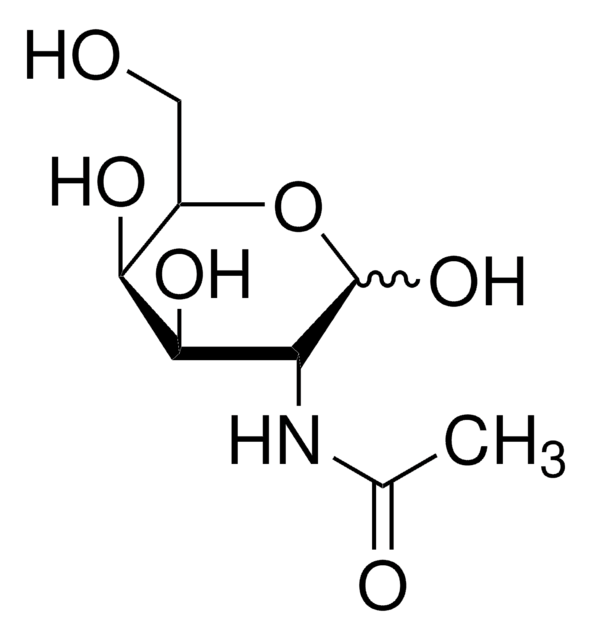77140
Peptidoglycan from Staphylococcus aureus
cell wall component
Synonyme(s) :
Peptidoglycan from S. aureus
About This Item
Produits recommandés
Niveau de qualité
Forme
lyophilized powder
Solubilité
soluble, hazy to turbid, colorless to faintly yellow
Température de stockage
−20°C
Catégories apparentées
Application
- for the stimulation of lymphocytes: peptidoglycan activates the toll-like receptor 2 (TLR2), present in mammalian cells. It works as an antagonist of Poly (I:C)
- for g-type lysozyme stimulation by intraperitoneally inoculating it into sole specimens
- in phosphate buffer saline and injected into Labeo rohita fingerlings, to study its effect on nucleotide-binding oligomerization domain-2 (NOD-2) gene expression
Actions biochimiques/physiologiques
Conditionnement
Autres remarques
Code de la classe de stockage
11 - Combustible Solids
Classe de danger pour l'eau (WGK)
WGK 3
Point d'éclair (°F)
Not applicable
Point d'éclair (°C)
Not applicable
Équipement de protection individuelle
Eyeshields, Gloves, type N95 (US)
Faites votre choix parmi les versions les plus récentes :
Déjà en possession de ce produit ?
Retrouvez la documentation relative aux produits que vous avez récemment achetés dans la Bibliothèque de documents.
Les clients ont également consulté
Articles
The basic structure of peptidoglycan (PGN) contains a carbohydrate backbone of alternating units of N-acetylglucosamine (GlcNAc) and Nacetylmuramic acid, with the N-acetylmuramic acid residues cross-linked to peptides.
Notre équipe de scientifiques dispose d'une expérience dans tous les secteurs de la recherche, notamment en sciences de la vie, science des matériaux, synthèse chimique, chromatographie, analyse et dans de nombreux autres domaines..
Contacter notre Service technique








